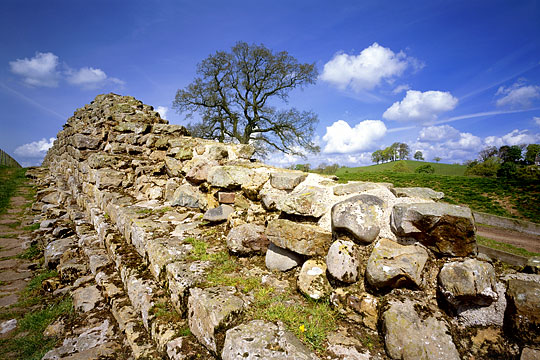Significance of Willowford Wall, Turrets and Bridge
This sector has produced much important information about the building of Hadrian’s Wall.

Building Sequence
- The exact findspots of 12 inscribed building stones have been recorded. Three give the names of centurions that also occur on stones further east; on the latter, the inscriptions show that one of these centurions had been promoted to a higher-ranking cohort, while another had left his original century, either because of his promotion or for some other reason.[1] This is evidence that the building of the Wall in this sector proceeded from west to east.
- One of these building stones,[2] together with other evidence,[3] has also shown that this sector of the Wall was built by the Twentieth Legion (Legio XX Valeria Victrix, whose main base lay at Chester).
- More generally, it was investigations between milecastle 48 to the east and the river Irthing to the west that eventually led to the recognition of the Broad Wall foundation as the unfinished first stage in the construction of the Wall, followed immediately, at least in this sector, by its completion to narrow gauge.[4]
Hadrian’s Wall Bridges
- The bridge at Willowford adds to the evidence from Chesters for how the line of Hadrian’s Wall was taken across rivers. In particular, the presence of the tower, presumably matched by another at the west end of the bridge, was an element repeated in the later phases at Willowford and at the road bridge at Chesters. It may have been needed for access to the carriageway across the bridge, but equally could have served to control and defend the river crossing. Roman parallels to what can be regarded as a fortified bridge are lacking, but there are many medieval examples in Britain.
READ MORE ABOUT WILLOWFORD WALL, TURRETS AND BRIDGE
Footnotes
1. RG Collingwood and RP Wright, The Roman Inscriptions of Britain, vol 1: Inscriptions on Stone (Oxford, 1965), nos. 1664, 1812; RSO Tomlin, RP Wright and MWC Hassall, The Roman Inscriptions of Britain, vol 3: Inscriptions on Stone 1955–2006 (Oxford, 2009), no. 3413.
2. Collingwood and Wright, op cit, no. 1867.
3. Ibid, no. 1762.
4. FG Simpson, Watermills and Military Works on Hadrian’s Wall, ed G Simpson (Kendal, 1976), pp 64–7, describing excavations in 1927 at Gilsland Vicarage; see also P Brewis, ‘Notes on the Roman Wall at Denton Bank, Great Hill and Heddon-on-the-Wall – Northumberland’, Archaeologia Aeliana, 4th series, 4 (1927), 120–21.
